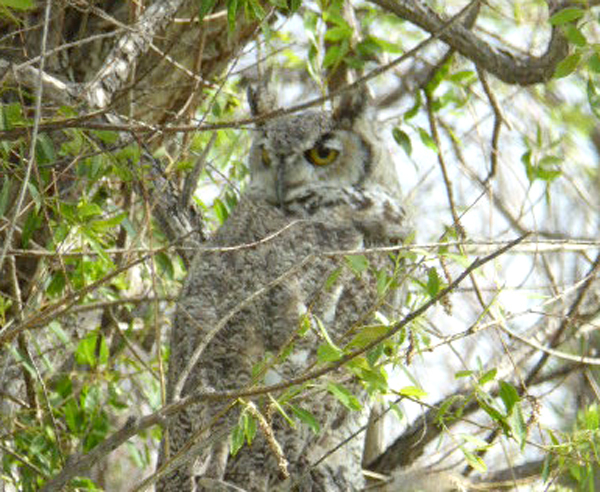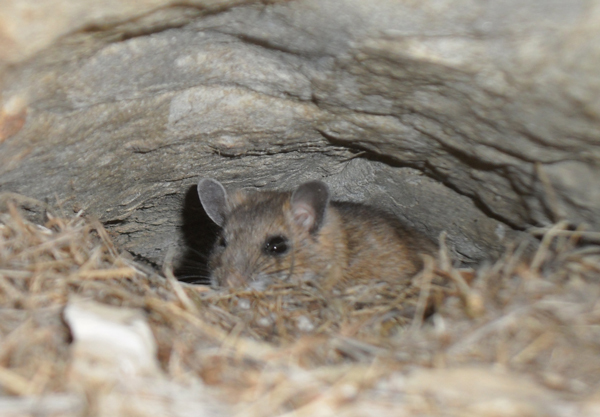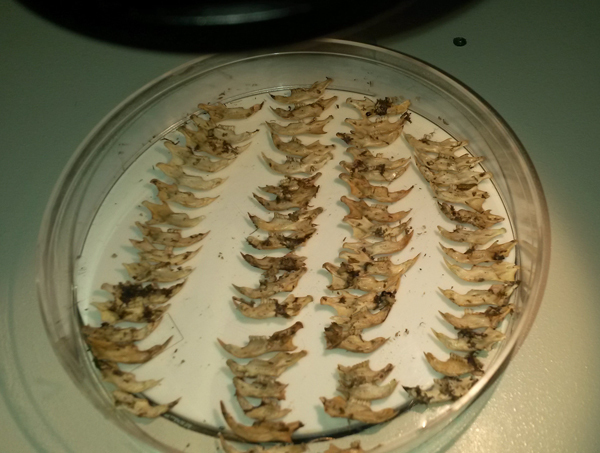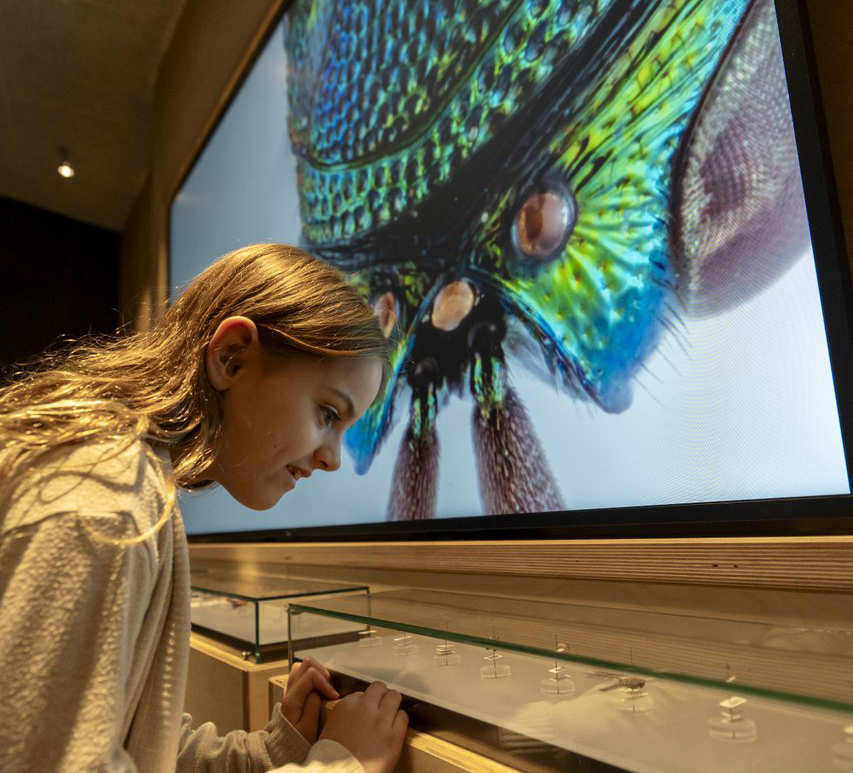
Collecting great horned owl pellets northwest of Medicine Hat, Alberta
The Royal Saskatchewan Museum has been collecting owl pellets across the Canadian prairies for 20 years and this year has been no different. From the aspen parkland stretching from Yorkton to Lloydminster, to the sprawling grasslands surrounding Medicine Hat, to the AAFC community pastures of southwest Saskatchewan, and Grasslands National Park, we were search of great horned owl nests and roosts where pellets could be collected. We filled over three garbage bags with owl pellets from these trips!

Great horned owl roosting in trees just outside Grasslands National Park
Why owl pellets? They provide a tremendous amount of information on the small mammal communities we find on the Canadian prairies. Owls swallow their small mammal prey whole and regurgitate the indigestible material (e.g., fur, bones, and teeth) as little compact pellets. The bones and teeth in these pellets can be used to identify which species of small mammals were eaten by owls at each location. We can also identify the number of individuals of each small mammal species eaten during the summer at each location, providing an idea of community composition. With pellets from over 9,000 locations on the Canadian prairies currently in the owl pellet collection at the Royal Saskatchewan Museum, we have a lot of data that can be used for studies on small mammal communities.

Prairie deer mouse (Peromyscus maniculats) resting in a hole in the side of a boulder
I started my academic career as a M.Sc. student at the University of Regina, using the Royal Saskatchewan Museum’s owl pellet collection to examine how habitat and weather affected where particular small mammal species are likely to be found. There are approximately 20 species of rodents on the Canadian prairies, and each has particular habitat affinities. Using the owl pellet collection, I discovered that while some rodent species seem to be found in almost every habitat type (i.e., deer mice), some species are only found in particular habitats (i.e., sagebrush voles). I also discovered that species are heavily influenced by annual weather patterns. For instance, I found irruptions of meadow voles on the Canadian prairies typically occur following very snowy winters. This is likely because meadow voles dig tunnels in deep snow, and can continue to reproduce under the cover of snow until spring.

Bones of prairie deer mice identified from owl pellets.
I am now a Ph.D. candidate with the University of Regina, and am using the same owl pellets to look at the impacts of agriculture on the distributions of rodent species. The conversion of the Canadian prairies for agricultural production has resulted in a patchwork of cropland, hayland, and native pasture that has likely changed the distributions of many rodent species. I suspect that different species will respond to these changes in different ways depending on their habitat affinities, or lack thereof. Understanding how agriculture has changed the distributions of particular rodent species has significant implications for the Canadian prairies because rodents are a vital source of food for a diversity of prairie predators, and they carry diseases that are transmissible to humans. Naturally, changes in the distributions of rodent species will likely result in changes in the distributions of the diseases they carry and the predators that rely on them for food.
Interested in what I discover next? Follow my research at www.leanneheisler.com.

